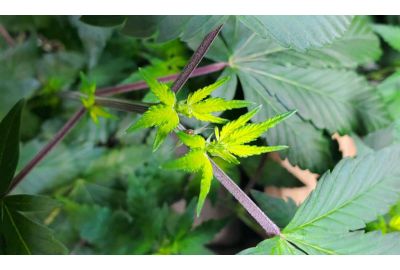How To Fix Cannabis Sulfur Deficiency
Most marijuana growers will never see a cannabis sulfur deficiency in their plants as it rarely occurs. But that doesn’t mean it can’t happen to you. If you’ve noticed the new leaves of your crops turning yellow or looking weak, they may be lacking in this essential micronutrient.
Correctly diagnosing a problem is the first step to fixing it and is necessary to ensure you use the right remedy. Join us as we explain what a sulfur deficiency in cannabis is and what it leads to. You’ll also learn how to spot the symptoms, treat the issue, and prevent it from happening again.
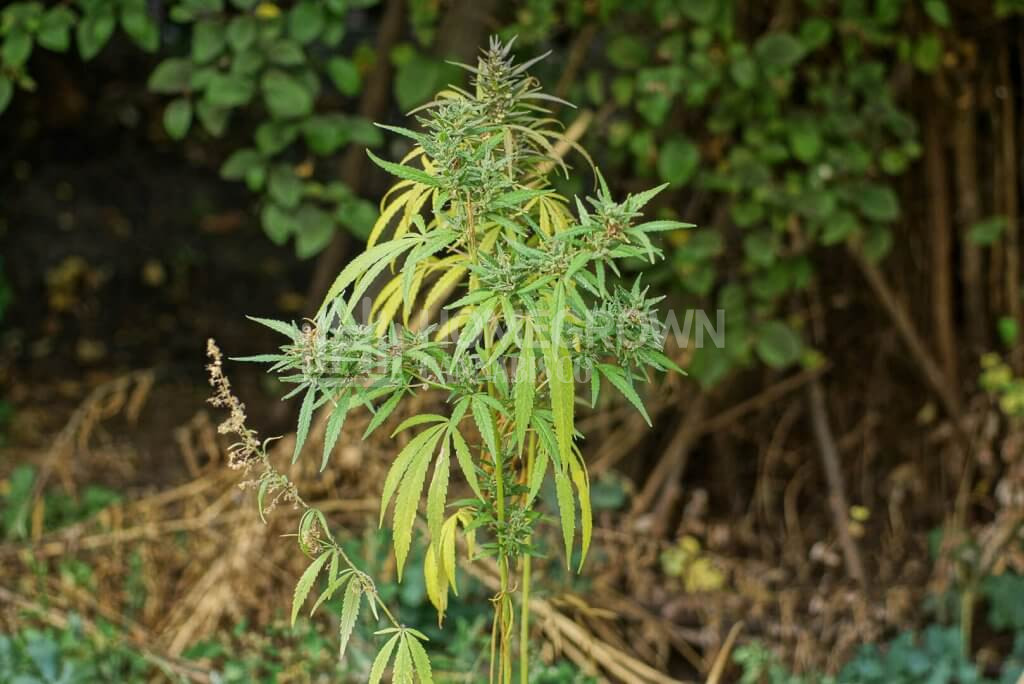
What is a sulfur deficiency?
A cannabis sulfur deficiency describes a situation where a marijuana plant is not able to absorb this essential mineral. Crops don’t need a lot of it compared to nutrients like nitrogen, potassium, and phosphorus. However, if it’s completely removed from your plant’s diet, all the necessary processes like photosynthesis come to a halt.
Sulfur deficiency symptoms are similar to other problems, requiring a keen eye to tell the difference. Once you know where to look, though, it’s easy figuring out what the best remedy is.
The first signs of this issue appear in the newer foliage, which is one way to differentiate between a lack of nitrogen. Leaves turn a yellow color, starting at the stem and spreading towards the tips, undergoing a process known as complete chlorosis.
All the foliage remains small, becoming weak and fragile over time. A cannabis sulfur deficiency also slows down the growth of your plant.
The worst time to not have enough of this nutrient is during the flowering stage. Not only will crops not develop properly, but buds will also start to shrivel up and fall off.
Left unattended, a sulfur deficiency in cannabis causes the leaf veins to turn yellow. The woody stems will remain thin and unable to support any weight. If you don't fix this issue at all, your marijuana plant could die.
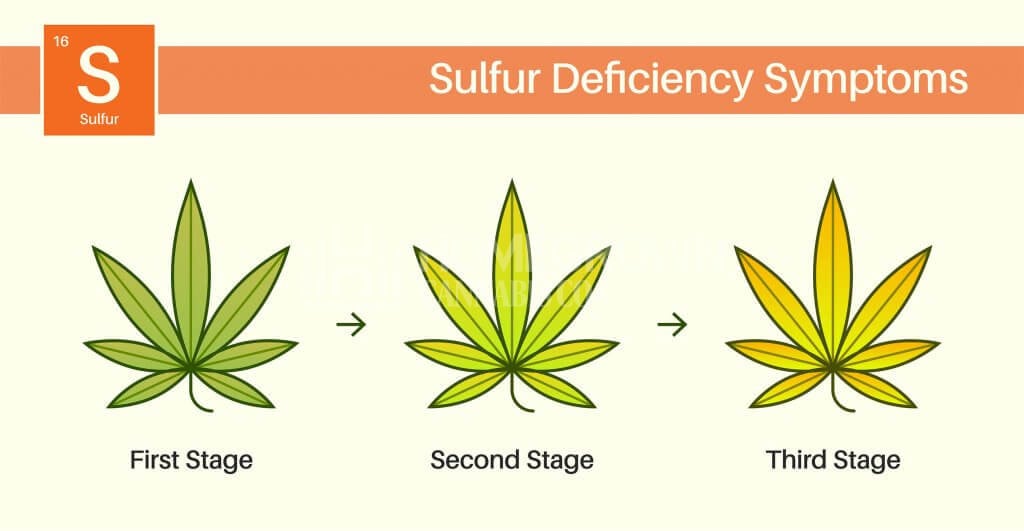
What does sulfur do for plants?
A cannabis sulfur deficiency brings to light just how important this micronutrient is for marijuana. It plays a vital role in encouraging a stable production of chlorophyll in the leaves and ensures it’s distributed properly.
This mineral is also a necessary component when it comes to developing amino acids and proteins for food. Preventing a sulfur deficiency in cannabis will ensure optimal root growth. It’s an important ingredient for maintaining water and nutrient intake. This mineral even helps with enhancing your plant’s metabolism.
It’s not just during the vegging phase that cannabis crops require sulfur. Plants need it throughout their lives, even as seedlings. During the flowering stage, it’s linked to fattening up those buds and maintaining strength in the branches.
What causes cannabis sulfur deficiency?
A cannabis sulfur deficiency could be the result of a few different issues with your growing setup. Below, we take you through the main reasons why your plants lack this required mineral.
Incorrect use of fertilizers
One way this kind of deficiency occurs is by using the wrong type of fertilizer. Some products don’t list the concentration of sulfur in the mix, so you’ll need to send it off to a lab to test.
If you use salt-based nutrients, a sulfur deficiency in cannabis can occur as a result of mixing the incorrect dose. Make sure you use a guide to cannabis nutrients to ensure you get the ratio right.
Poor-quality mediums
Another common cause of a cannabis sulfur deficiency is buying cheap growing mediums. These types of substrate don’t contain the trace amounts of this mineral required, and your plants suffer as a result.
Bad pH levels in your soil
More often than not, the reason crops lack this necessary nutrient is due to the growing medium being too acidic. If you don't maintain the perfect pH for cannabis plants, the roots won't suck up any nutrients.
It’s crucial to look at the soil’s acidity when diagnosing a sulfur deficiency in marijuana. Even if you use a premium fertilizer with essential nutrients, your crops won’t utilize them.
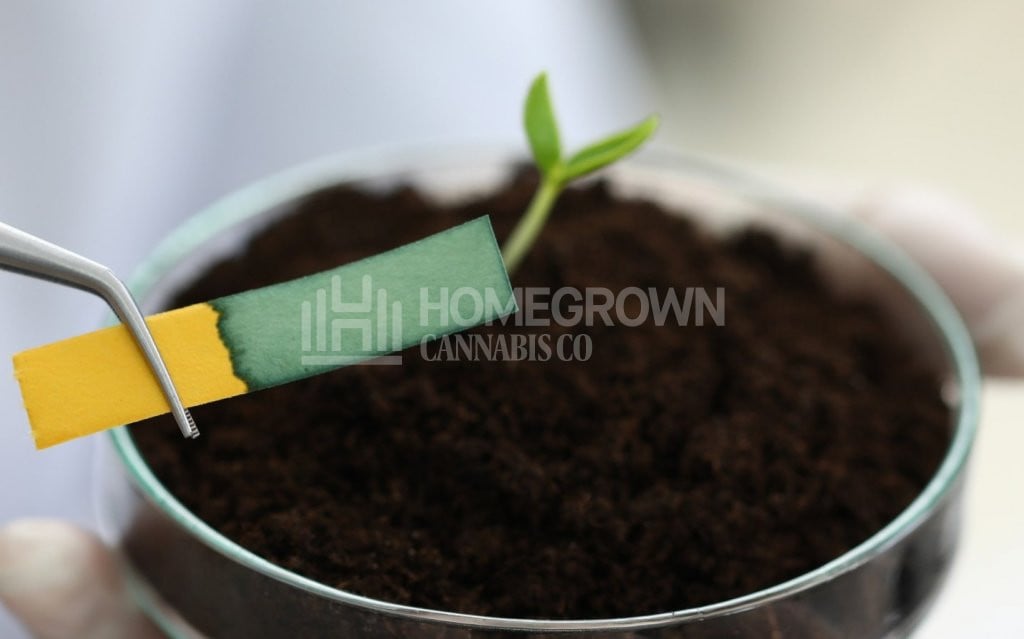
Sulfur deficiency symptoms in weed plants
Learning how to distinguish between sulfur deficiency symptoms and other nutrient issues is crucial for determining the right cure. Here are the main ways to identify this lack of nutrients in your marijuana plant.
Leaves and stems turn yellow
A crop’s foliage will start to turn a shade of yellow rather than its healthy green hue. Most importantly, the changes occur in new leaves, which is the opposite of what occurs if there’s a nitrogen problem.
A tell-tale sign of a cannabis sulfur deficiency is also when the color transformation begins in the center of the leaf. As the problem persists, the yellow hue spreads outwards towards the tips.
The discoloration becomes more pronounced, and you’ll see parts of the stems turn yellow if left untreated. Leaves soon become thin, fragile, and easily susceptible to pests or diseases.
Slower growth
Another indication of a sulfur deficiency in cannabis is poor overall crop growth. Your plant will stay small in stature and produce fewer branches. It'll almost start looking sickly and exhausted as it's unable to convert energy into food.
Burnt leaf tips
In the absence of this mineral, your plant’s leaf tips will start to look burnt, similar to many other deficiencies. As time passes, these affected areas dry out and bend downwards until the entire leaf dies and falls off.
Flowers fall off
A cannabis sulfur deficiency can also take place during the flowering stage of your plant. It can slow down a crop’s bud production and severely limit the size of potential yields. In some cases, a lack of this mineral can make your bud dry up and fall to the ground.
How to fix a sulfur deficiency in marijuana plants
There are three ways to treat a sulfur deficiency in cannabis and prevent it from happening again. In order for these methods to be successful, you need to confirm the underlying cause first.
Check pH levels in your soil
The quickest way to fix a lack of nutrients in marijuana is by testing the pH levels present in your growing medium. There are various kits you can use to get a one-time reading. Alternatively, buy a digital device that displays the current acidity level.
Ensure your substrate has a pH reading between 5.5 and 6.0 to maintain optimal conditions. Anything outside this range can create a cannabis sulfur deficiency because roots can’t absorb any nutrients.
Use Epsom salts
If your growing medium isn’t the issue, there’s likely not enough of this mineral present in your chosen substrate.
To cure a sulfur deficiency in cannabis, buy a packet of organic supplement to sprinkle on top of the soil before feeding. You’ll need about one teaspoon of Epsom salts for every liter of water you use.
Some cultivators prefer to dissolve Epsom salt in a solution before feeding their plants. Gypsum and potassium sulfate are acceptable alternatives as they both contain sufficient levels of sulfur.
Buy a balanced feed
A lot of beginners only use water to feed their marijuana plants, which can cause a sulfur deficiency in cannabis. The best way to prevent this issue from cropping up is by opting for a quality fertilizer.
Pay close attention to the recommended ratios when mixing water and minerals, as you could cause a cannabis nutrient burn.
|
Symptom |
How to solve it |
|
Yellow leaves |
Check your soil’s pH level and ensure it is between 5.5 and 6.0. Use one teaspoon of Epsom salts for every liter of water that you feed your plant. Start using a balanced fertilizer once crops get healthier. |
|
Stunted growth |
|
|
Burnt leaf edges |
|
|
Bad bud production |
What is sulfur toxicity in cannabis?
Sulfur toxicity in plants is the opposite of a deficiency, describing a situation where crops have this mineral in excess. It’s incredibly rare to experience this issue, but it’s not unheard of.
Spotting this problem is also tricky because too much sulfur can block out nitrogen and calcium. You may find yourself diagnosing the wrong thing, making your attempts to rescue your plant in vain.
The easiest way to spot too much sulfur in plants is by their leaves turning a dark green or brown hue. You’ll also notice the foliage tips and sides developing a burnt appearance.
It’s also likely to occur when your substrate is at the wrong pH level. Anything below 5.0 means that the soil is too acidic and can lead to sulfur toxicity in plants. Crops also won't grow to their full potential, remaining small and sickly-looking.
How to treat cannabis sulfur toxicity?
The only way to fix too much sulfur in plants is by removing everything from your medium and starting again.
Flushing cannabis is the best way to sort out this issue. The rule of thumb is to use twice as much water as your pot’s capacity. So, if you have a 5-gallon container, you’ll need around 10 gallons of water to flush.
Check the pH of your growing medium afterward to ensure sulfur toxicity in plants doesn’t reoccur. A reading between 5.5 and 6 is optimal. Feed your plants water only for one week. After this period, start using a balanced fertilizer containing sufficient levels of all the required minerals.
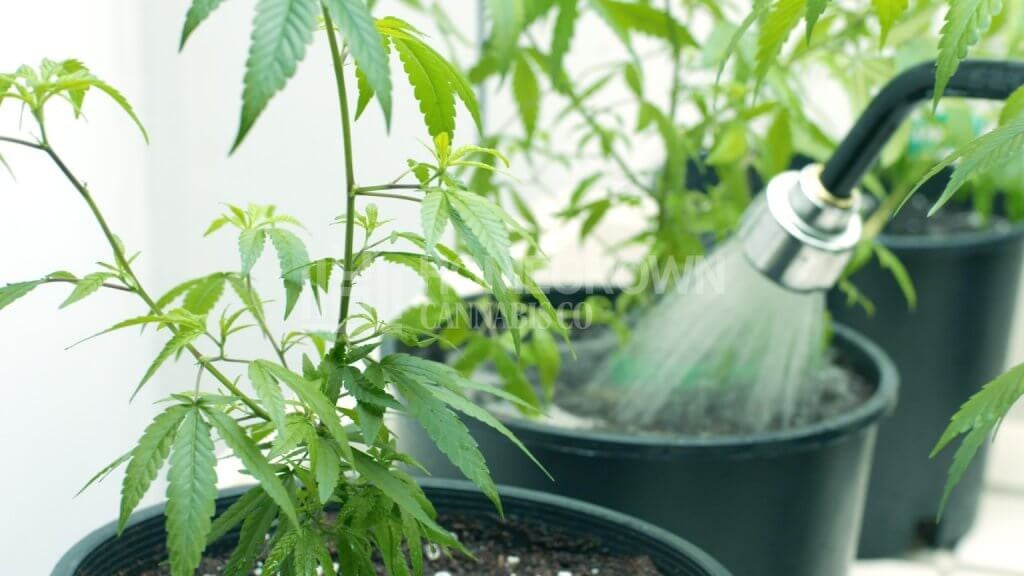
The devils in the details
It’s easy to forget how important some minerals are when crops require such small portions of them. But if you take it away completely, you start to understand the vital role it has to play. A cannabis sulfur deficiency is a perfect example of a rare problem that can create havoc when left untreated.
Luckily, fixing this issue couldn’t get any easier. Before taking action, make sure you confirm the symptoms to ensure you take the proper steps.
In the event of a sulfur deficiency in cannabis, check the pH of your soil and use Epsom salts to supplement this mineral. On the other hand, if you have too much of this nutrient present in your plants, a flush is required. Prevention is always better than cure, so use a quality fertilizer and monitor the acidity of your soil to maintain healthy plants.
For added protection, only buy weed seeds from Homegrown Cannabis Co. Our strain’s stable genetics help keep plants healthy and avoid issues like a sulfur deficiency in marijuana.
About the author: Derek LaRose
Also known as Kronic from The Cannabis Kronicles, Derek LaRose is a young ambitious cultivator and a staple educator for indoor cultivation.
